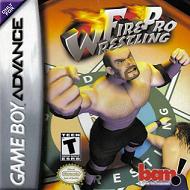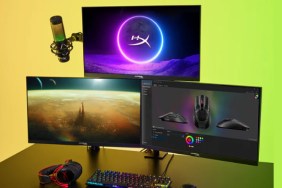As some of you know, I’m not a fan of Top 10 lists, especially ones that saturate gaming journalism for the sake of meaningless weekly features that get hits. Few of them are actually interesting, humorous, or well-researched, but in this business, page hits are the bottom line… which means that next week, I’ll be writing “The Top 10 Things That Jiggle in Gaming”. Look, if I’m just going to be a sell-out corporate peon, then I’m going to be the sleaziest best corporate peon ever. (Oh, the things we do for rent money…)
To be absolutely clear, this list concerns titles for professional wrestling (or wrestling entertainment) and not for the actual Olympic sport of wrestling, which has rarely been featured in a video game unless it’s part of some random mini-game collection. Only titles released in the U.S. are eligible (sorry, Japanese import fans) and no wrestling strategy simulations count, either.
Games are ranked not just by the critical scores they received at their release (you can just go to GameRankings for that), but for their impact on the industry, their dominance in their generation of consoles, their completeness as a package, and any features the game established in the genre. If you don’t see your favorite on your top 10 list (hopefully, Smackdown doesn’t appear in all ten slots), it was likely passed over for one of its better sequels.
Honorable Mention: Fire Pro Wrestling (GBA, 2001)
The Japanese Fire Pro series, the longest-running wrestling game franchise, doesn't get much love in the U.S. mostly because of its limited release and the dominance of the WWF/WWE and WCW brands. To most gamers who have (sort of) heard about it, Fire Pro Wrestling is that oddball isometric brawler with 2D sprites that looks strange and cheesy. But for hardcore players, its options, features, and roster of wrestlers (though unlicensed) is unmatched.
For the GBA, Fire Pro Wrestling packs 150 wrestlers, which includes palette-swap adaptations of superstars from Pride, New Japan Pro Wrestling, Ultimate Fighting (it even had an octagon ring), and the WWF. Not to mention the countless number of created wrestlers you can make from the hundreds upon hundreds of parts – techniques, A.I. control, offensive and defensive techniques, and skills.
Button mashers aren’t rewarded, either; defeating the opponent requires precise timing, and you can’t just go for the kill early on or you’ll just get countered. Of course, you can just go for bloodshed and cause an instant “give up” (nothing like a itty-bitty blood to make a muscle man cry). The game also features a challenging audience match mode, where you have to impress the crowd by defeating the opponent fast, furiously, or however they want you to. Above all, how Spike and BAM! Entertainment crammed this all into a little cartridge, and for the handheld no less, is mind-boggling.
10. Def Jam: Fight for NY (PS2, 2004, Electronic Arts)
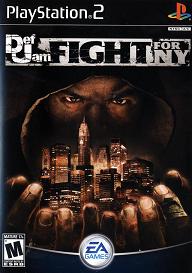 At first glance, it might be strange that Def Jam: Fight for NY is on the list at all since it looks like a MMA Fight Club–styled backstreet brawl, but it also plays like an aggressive hardcore wrestling match on the streets. The fighting does refocus its wrestling origins on mixed martial arts, but it’s still founded on grappling as much as hard-hitting melee combos to get opponents into vulnerable, groggy positions, and then finishing the opponent off with a “blazin’ move” (usually from a grapple) for a satisfying crunch.
At first glance, it might be strange that Def Jam: Fight for NY is on the list at all since it looks like a MMA Fight Club–styled backstreet brawl, but it also plays like an aggressive hardcore wrestling match on the streets. The fighting does refocus its wrestling origins on mixed martial arts, but it’s still founded on grappling as much as hard-hitting melee combos to get opponents into vulnerable, groggy positions, and then finishing the opponent off with a “blazin’ move” (usually from a grapple) for a satisfying crunch.
Better than that, it gets the best of two worlds: Hip-hop rappers, who woulda thunk? It has a star-studded cast with the likes of Xzibit, Flava Flav, Lil’ Kim, and Snoop Dogg as the villainous Crow, all of whom did unexpectedly solid voice-work. The story was admittedly straightforward and characters shift alignments a bit too often, but it is much stronger than the plot of its immediate predecessor, Def Jam Vendetta, and it’s meant to be campy and over-the-top, anyway.
More than just a game with an “M”-rating, it also had F-bombs that actually worked and it didn’t hold back its gangsta flavor. You could create a fighter from a wide selection of parts from various urban fashion shops, getting new hairstyles, threads, tats, and bling, all of which look like they come straight out of a music video so buck that you want to tackle it. And all those pimp-out clothes meant more respect from the crowd, who would get into the brawl on the sidelines. (My guy was shirtless and wore a chunky silver chain. Don’t be messin’ with my style, ya hear? Or I’ll krump on your face.)
9. WWF WrestleFest (Arcade, 1991, Technos Japan Corporation)
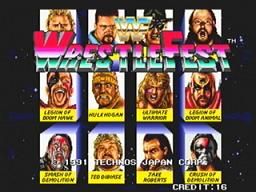 Without question, WWF Wrestlefest remains the best arcade wrestling title during the short stint the genre had in coin-ops. But if you remember playing it, you likely also remember how many quarters it sucked out of you, if just to recover your health on the fly or, more likely, to add more time to the clock. Not only were the graphics impressive for an early ‘90s title, but it had a great grappling system that cemented the idea that the grapple position could branch into other moves like suplexes and submissions, with additional moves unlocked as you knock your opponent’s health down.
Without question, WWF Wrestlefest remains the best arcade wrestling title during the short stint the genre had in coin-ops. But if you remember playing it, you likely also remember how many quarters it sucked out of you, if just to recover your health on the fly or, more likely, to add more time to the clock. Not only were the graphics impressive for an early ‘90s title, but it had a great grappling system that cemented the idea that the grapple position could branch into other moves like suplexes and submissions, with additional moves unlocked as you knock your opponent’s health down.
Just as impressive are the incredible production values – audio commentary, the colorful and detailed sprites, and a roster chock-full of WWF wrestlers like Mr. Perfect, Ultimate Wariror, Hulk Hugan, Sergeant Slaughter, and Jake “The Snake” Roberts. Whether you selected the tag team championship, where you had to face The Legion of Doom with Hawk and Animal taunting you the whole way through, or the Royal Rumble (Battle Royale), the first of its kind and with up to six players onscreen at any one time, WWF Wrestlefest was an addictive cabinet that had players come back for more.
8. Tecmo World Wrestling (NES, 1990, Tecmo)
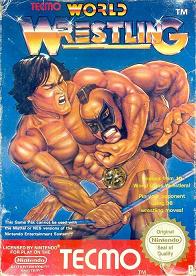 In the realm of retro button-mashing wrestling titles, Tecmo World Wrestling (known as Gekitou Pro Wrestling!! Toukon Densetsu in Japan) for the NES released in 1990 stood out mainly because of its play-by-play text commentary by the animated Tom Talker. As you executed moves with your chosen wrestler – just to name a few, A. Dragon, J. Flacon., J. Kee, and E. Tigre (with the Engrish Northern “Right” Suplex) – Tom would announce moves faster than a soccer commentator on Univision: Brain Buster! Figure Four! Shoulder Throw! A Sudden Turnaround!
In the realm of retro button-mashing wrestling titles, Tecmo World Wrestling (known as Gekitou Pro Wrestling!! Toukon Densetsu in Japan) for the NES released in 1990 stood out mainly because of its play-by-play text commentary by the animated Tom Talker. As you executed moves with your chosen wrestler – just to name a few, A. Dragon, J. Flacon., J. Kee, and E. Tigre (with the Engrish Northern “Right” Suplex) – Tom would announce moves faster than a soccer commentator on Univision: Brain Buster! Figure Four! Shoulder Throw! A Sudden Turnaround!
Moreover, it had a bevy of moves for its time including ground attacks, aerial attacks, and running attacks off the ropes, and some finisher moves that would end with a close-up cut-scene of an action replay. Winning the match can be done by three-count pinfall, count-out, or submission, all of which were made easier if you knocked your opponent’s health bar lower. Between bouts, you can even upgrade your wrestler’s power in training sessions with sit-ups, squats, and a sumo on your back as you do push-ups. Not only impressive for the NES, Tecmo World Wrestling was ahead of its time.
7. WWE Smackdown! vs. RAW 2006 (PS2, 2005, THQ)
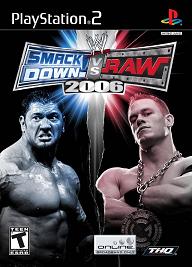 For the last Smackdown! title in the PS2 generation before the series took its first leap to the Xbox 360 (though they still produce PS2 variants of current-gen Smackdown! titles), THQ wanted to leave the PS2 with a bang. Players now had to cope with stamina and momentum bars and couldn't abuse power move after power move without any repercussion, forcing them to play more strategically and with a better understanding of pace. But if you didn’t care for stamina, you could always turn it off.
For the last Smackdown! title in the PS2 generation before the series took its first leap to the Xbox 360 (though they still produce PS2 variants of current-gen Smackdown! titles), THQ wanted to leave the PS2 with a bang. Players now had to cope with stamina and momentum bars and couldn't abuse power move after power move without any repercussion, forcing them to play more strategically and with a better understanding of pace. But if you didn’t care for stamina, you could always turn it off.
Wrestlers could select moves from three of seven categories, as an addition to submission and Clean/Dirty grapples, allowing for better customization and division of moves. Other additions included an adequate simulation GM mode, a power Irish whip, doors for steel cage matches, being able to steal your opponent’s taunt and play possum, and having the option to store a finisher for later use. In an allusion to the casket match from WWF Smackdown 2! Know Your Role, the new Buried Alive match type had you send your opponents to the grave literally. Even better, every wrestler in Season mode was voiced by their real-life counterparts, with better dialogue and unexpected enthusiasm. The level of content and depth marks WWE Smackdown! vs. RAW 2006 as the best installment in the Smackdown! franchise on the PS2.
6. WWF Raw (SNES, Genesis, 1994, LJN / Acclaim Entertainment)
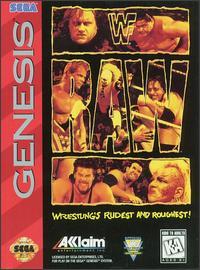 WWF Raw, not to be confused with WWF/E Raw for Xbox and PC, is the last in the trilogy of SNES and Sega Genesis titles with the WWF name: WWF Super Wrestlemania and WWF Royal Rumble. And like most third and final acts in trilogies, WWF Raw is the best of them all, polishing the tug-of-war grappling system unique to the series and boasting fluid and vivid animations, notably the distinctive finishing moves for each wrestler. But the best “feature” hands-down is being able to knock out the ref and start choking, eye raking, and gleefully bashing the opponent with a steel chair hidden underneath the squared circle.
WWF Raw, not to be confused with WWF/E Raw for Xbox and PC, is the last in the trilogy of SNES and Sega Genesis titles with the WWF name: WWF Super Wrestlemania and WWF Royal Rumble. And like most third and final acts in trilogies, WWF Raw is the best of them all, polishing the tug-of-war grappling system unique to the series and boasting fluid and vivid animations, notably the distinctive finishing moves for each wrestler. But the best “feature” hands-down is being able to knock out the ref and start choking, eye raking, and gleefully bashing the opponent with a steel chair hidden underneath the squared circle.
The roster, however, is split down the middle with five exclusive characters going to each platform, which either shows the limitations of the software or a lack of forethought as to what fans want, or both. Not having Hulk Hogan, Papa Shango, or Jim Duggan in the SNES version and not having Yokozuna, Ric Flair, and Mr. Perfect in the Genesis version is near-unacceptable. But apart from that, WWF Raw is solidly produced, had strong multiplayer modes (Tag Team and Royal Rumble), and best represented the brand for its time.
5. WWF Wrestlemania 2000 (N64, 1999, THQ)
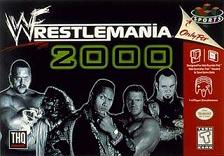 Cementing the now lasting relationship between THQ and the WWF/E, WWF Wrestlemania 2000 with The Rock emblazoned on the front of the cover fine-tuned the engine used in WCW/nWo Revenge, another worthy contender that probably would have made the list if AKI hadn’t made two impressive sequels. The game’s impressive roster of 50 WWF wrestlers, complete with authentic moves and entrances, and almost exhaustive Create-A-Wrestler mode complemented its linear season mode, which went through all of the pay-per-views in the Wrestlemania season. You could even change the attire of any of the superstars, a feature I hope will return in the upcoming WWE Smackdown! vs. RAW 2010 through its Superstars Threads mode. Best of all, you could recreate wrestlers like Goldberg and Macho Man Randy Savage from the clothing and moves parts given in CAW mode to fill out the roster with more of your fan favorites.
Cementing the now lasting relationship between THQ and the WWF/E, WWF Wrestlemania 2000 with The Rock emblazoned on the front of the cover fine-tuned the engine used in WCW/nWo Revenge, another worthy contender that probably would have made the list if AKI hadn’t made two impressive sequels. The game’s impressive roster of 50 WWF wrestlers, complete with authentic moves and entrances, and almost exhaustive Create-A-Wrestler mode complemented its linear season mode, which went through all of the pay-per-views in the Wrestlemania season. You could even change the attire of any of the superstars, a feature I hope will return in the upcoming WWE Smackdown! vs. RAW 2010 through its Superstars Threads mode. Best of all, you could recreate wrestlers like Goldberg and Macho Man Randy Savage from the clothing and moves parts given in CAW mode to fill out the roster with more of your fan favorites.
4. WWF Smackdown! (PS, 2000, THQ)
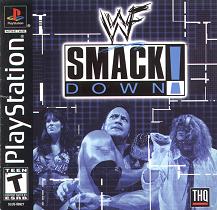 The influence of the first WWE Smackdown! title is undeniable and obvious. It established one-button grapples so that you don’t have to enter a series of complex hand gesticulations just to pull off a basic scoop-up slam, a month-to-month, event-to-event career mode that doesn’t stop at simply winning the belt, and pre- and post-match cut-scenes to match the brawny, lycra-clad man-dramas on TV. The main highlight, apart from the special referee variant and hardcore matches where you could move from the arena to backstage, was the “I Quit” match where you forced your opponent to say those two dreaded words into a microphone for the whole world to hear (though I always thought that "I Suck" would have been even better). It also set a new standard for production values – all the wrestlers’ theme songs, great 3D collision detection and physics for its time, finishers that are spot-on, and relatively short loading times. Combat became less about button-mashing and more about action based on technique and power, elevating the genre to a new level of gameplay and widening the fanbase for skill-based players.
The influence of the first WWE Smackdown! title is undeniable and obvious. It established one-button grapples so that you don’t have to enter a series of complex hand gesticulations just to pull off a basic scoop-up slam, a month-to-month, event-to-event career mode that doesn’t stop at simply winning the belt, and pre- and post-match cut-scenes to match the brawny, lycra-clad man-dramas on TV. The main highlight, apart from the special referee variant and hardcore matches where you could move from the arena to backstage, was the “I Quit” match where you forced your opponent to say those two dreaded words into a microphone for the whole world to hear (though I always thought that "I Suck" would have been even better). It also set a new standard for production values – all the wrestlers’ theme songs, great 3D collision detection and physics for its time, finishers that are spot-on, and relatively short loading times. Combat became less about button-mashing and more about action based on technique and power, elevating the genre to a new level of gameplay and widening the fanbase for skill-based players.
3. Fire Pro Wrestling Returns (PS2, 2007, Agetec / Spike)
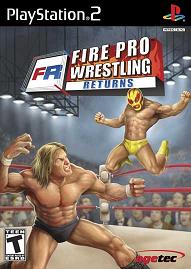 Fans waited for two long years before Fire Pro Wrestling Returns made it from Japan to the States in 2007, with Spike finally making its comeback after their announced end to the 2D-sprite-happy Fire Pro Wrestling series in 2003. For it is the ultimate wet dream for obsessive fans to live out their M.U.G.E.N.-esque fantasy match-ups between the 327 brawlers in the roster and fiddle with the extensive creation editor for up to 500 additional characters and custom rings, belts, logos, and refs. And even if there are no equivalents to favorite wrestlers in more popular brands like the WWE, the nearly overwhelming number of parts for heads, bodies, clothes, and accessories allows players to recreate them down to their names and fighting style, A.I. behavior, and moveset from a list of 1,649 maneuvers.
Fans waited for two long years before Fire Pro Wrestling Returns made it from Japan to the States in 2007, with Spike finally making its comeback after their announced end to the 2D-sprite-happy Fire Pro Wrestling series in 2003. For it is the ultimate wet dream for obsessive fans to live out their M.U.G.E.N.-esque fantasy match-ups between the 327 brawlers in the roster and fiddle with the extensive creation editor for up to 500 additional characters and custom rings, belts, logos, and refs. And even if there are no equivalents to favorite wrestlers in more popular brands like the WWE, the nearly overwhelming number of parts for heads, bodies, clothes, and accessories allows players to recreate them down to their names and fighting style, A.I. behavior, and moveset from a list of 1,649 maneuvers.
Beyond that, there’s nothing like whipping opponents into exploding barbed wire ropes, pinning their bloodied body for the win, and then kicking them when they’re down while your mouth shapes an evil grin. The only concern is that this game – and the Fire Pro Wrestling series in general – is strictly for the hardcore audience, with Fire Pro Wrestling Returns being either at the top of the list for fans of the wrestling genre or not on their list at all, a fact that can be debated in forum wars starting… now.
2. WWF Smackdown: Here Comes The Pain (PS2, 2003, THQ)
 With Brock Lesnar muscling his way onto the cover, back before he was strong-arming his opponents in the UFC octagon, WWE Smackdown! Here Comes the Pain brought the house down in 2003 with its powerhouse modes and features. Its new grappling system allowed players to choose their wrestler’s moves freely from multiple select categories, each with their own flavor and strengths. With a Season mode written by actual WWE writers, new modes like First Blood, Elimination Chamber, and Bra and Panties, and a simple but effective (and should be revived) progression for stats (rated 1-10 for Strength, Submission, Stamina, Technique, and Speed), getting into the ring for a year’s worth of show-stopping events was never easier or more enticing.
With Brock Lesnar muscling his way onto the cover, back before he was strong-arming his opponents in the UFC octagon, WWE Smackdown! Here Comes the Pain brought the house down in 2003 with its powerhouse modes and features. Its new grappling system allowed players to choose their wrestler’s moves freely from multiple select categories, each with their own flavor and strengths. With a Season mode written by actual WWE writers, new modes like First Blood, Elimination Chamber, and Bra and Panties, and a simple but effective (and should be revived) progression for stats (rated 1-10 for Strength, Submission, Stamina, Technique, and Speed), getting into the ring for a year’s worth of show-stopping events was never easier or more enticing.
The only substantial disappointment was a roster that forgot to include the likes of Shan McMahon, Farooq, Maven, and Bradshaw, and then lost The Ultimate Warrior, Hulk Hogan, Jeff Hardy, and others during its production. But even with these gaping holes, this fifth installment remains the most critically successful and fan-favorite outing in the WWE Smackdown! franchise thus far.
1. WWF No Mercy (N64, 2000, THQ)
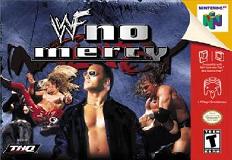 One of the few games in history that split game critics and fans, WWF No Mercy stands the test of time and should be heralded as the best example of what the wrestling genre has to offer. More than just a follow-up to WWF Wrestemania 2000, it still sets the bar for all wrestling games to follow, with a storyline that branched depending on whether you won or lost and a comprehensive Create-A-Wrestler mode that rivals similar modes of today's games in design. Just being able to copy select attributes of a wrestler to another – a moveset or appearance but not both – has yet to grace any wrestling titles today (It sounds minor, but without it, it would be like having to eat everything on the menu rather than ordering just the items you want). The long list of unlockables in the Smackdown Mall also put it ahead of its time in terms of replay, and the dark, sinister color palette made for a great style.
One of the few games in history that split game critics and fans, WWF No Mercy stands the test of time and should be heralded as the best example of what the wrestling genre has to offer. More than just a follow-up to WWF Wrestemania 2000, it still sets the bar for all wrestling games to follow, with a storyline that branched depending on whether you won or lost and a comprehensive Create-A-Wrestler mode that rivals similar modes of today's games in design. Just being able to copy select attributes of a wrestler to another – a moveset or appearance but not both – has yet to grace any wrestling titles today (It sounds minor, but without it, it would be like having to eat everything on the menu rather than ordering just the items you want). The long list of unlockables in the Smackdown Mall also put it ahead of its time in terms of replay, and the dark, sinister color palette made for a great style.
Refining the system brought by WWF Wrestlemania 2000, it capitalized on reversals, rising ground attacks, damage that could be focused on specific body parts (a damaged leg actually meant less speed), and a ladder match where you can climb up the ladder, slam poor souls into the ladder, or just whack them with the ladder – all features that every wrestling title henceforth needed to have if it wanted to be anywhere close to greatness. It did have some issues with slowdown, pixilated FMVs, and wrestler-erasing bugs, but with the lack of competition in the wrestling genre since WWE absorbed both WCW and ECW, it set a standard that not many, if any, have reached thus far. Befitting its name, WWF No Mercy is just about the complete package and remains historically at the top of the wrestling genre without compromise.
